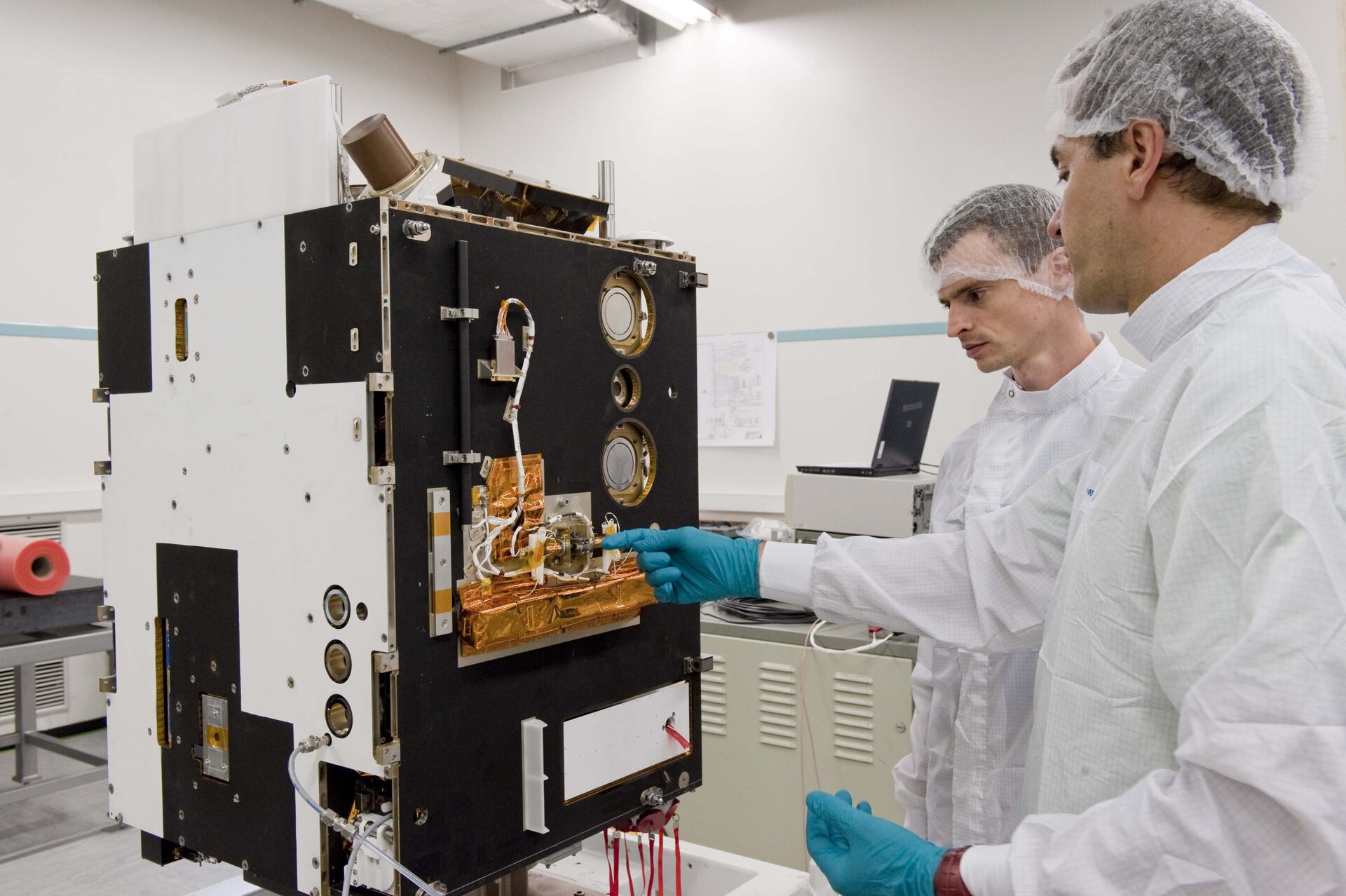Proba-2's journey to Russia marks its first step towards space
Proba-2, one of the smallest satellites ESA has ever built for space, is about to leave its Belgian homeland. Its development and testing complete, the satellite is being packed up for the first leg of its journey to orbit - shipment to the distant Plesetsk launch site in northern Russia.
Proba-2 is second in ESA's Project for OnBoard Autonomy series, building on nearly eight years of operational experience gained with Proba-1. While standard satellites are truck-sized structures, the Proba satellites have a volume of less than one cubic metre. But this small scale does not limit their functionality: Proba-2 incorporates a total of 17 new technological developments and four scientific experiments, focused on solar and space weather observations.
Like Proba-1 before it, Proba-2 was constructed for ESA by Verhaert Design & Development in the East Flanders town of Kruibeke, with the support of the Belgian Federal Science Policy Office. On Wednesday Belgian Minister for Science Policy Sabine Laruelle visited the company to bid farewell to the satellite and emphasise again the importance of space technology for the Belgian space policy.
“Proba-2 is the result of ESA's commitment to technological innovation,” said Director Courtois. “This mission is serving as a testbed for a variety of new space technologies. And the next two in the Proba series, the Proba-3 formation flying demonstrator and Proba-V vegetation monitoring mission, are already in preparation.”
"PROBA was developed under the ESA General Studies Technology Programme (GSTP), which fosters the development of flight hardware,” explained Frank Preud’homme, Verhaert Space Business Unit Manager. “This allowed Verhaert Space to build up satellite engineering capabilities and to attain a competitive position on the international market for small satellites."
David Berghmans of the Royal Observatory of Belgium briefed journalists on Proba-2's Sun-monitoring instruments: LYRA (Lyman-Alpha Radiator) is designed to measure solar irradiance in key ultraviolet bands, while SWAP (Sun Watcher using Active pixel detector and image Processing) will make ultraviolet observations of the corona around the Sun. Two further science instruments developed by a scientific consortium from the Czech Republic will detect the radiation and plasma environment around the spacecraft.
In-orbit technology testing supporting European competitiveness

The Proba series are part of ESA's GSTP In-orbit Technology Demonstration Programme: missions dedicated to the demonstration of innovative technologies. In orbit demonstration is the final step on the technology development ladder, proving new hardware has the 'right stuff' for ongoing use.
Such missions provide small and medium sized companies with rich operational experience essential for European industry to remain innovative and competitive.
As part of ESA's strategy to reduce mission costs the satellite will piggyback its way to orbit aboard the same Rockot launcher carrying ESA's full-sized Soil Moisture and Ocean Salinity (SMOS) Earth Explorer satellite. The two are scheduled to launch from Plesetsk Cosmodrome on 2 November.
More information
Frederic.Teston @ esa.int















 Germany
Germany
 Austria
Austria
 Belgium
Belgium
 Denmark
Denmark
 Spain
Spain
 Estonia
Estonia
 Finland
Finland
 France
France
 Greece
Greece
 Hungary
Hungary
 Ireland
Ireland
 Italy
Italy
 Luxembourg
Luxembourg
 Norway
Norway
 The Netherlands
The Netherlands
 Poland
Poland
 Portugal
Portugal
 Czechia
Czechia
 Romania
Romania
 United Kingdom
United Kingdom
 Slovenia
Slovenia
 Sweden
Sweden
 Switzerland
Switzerland





























